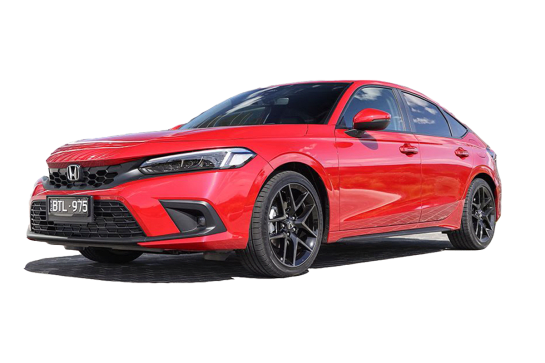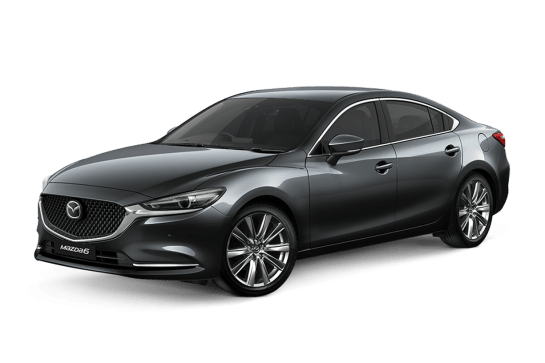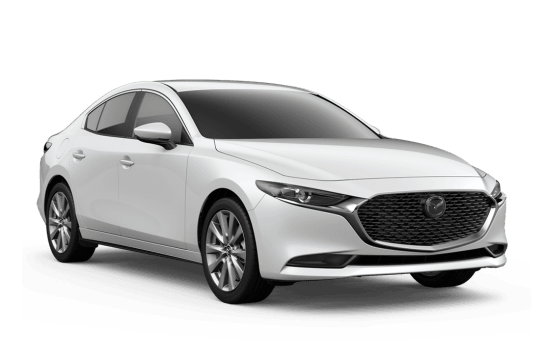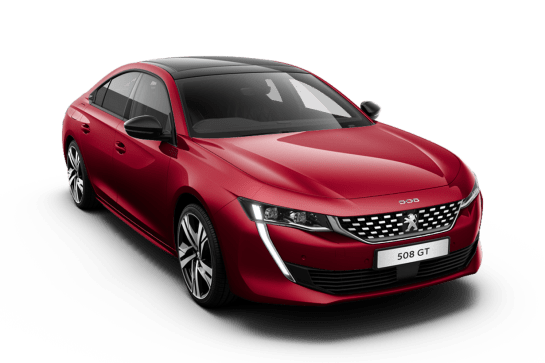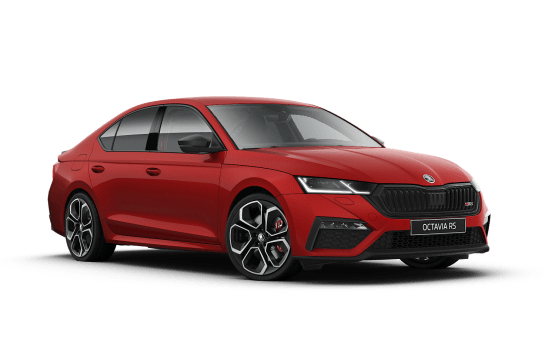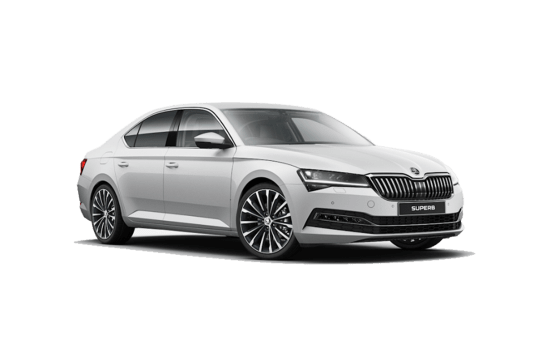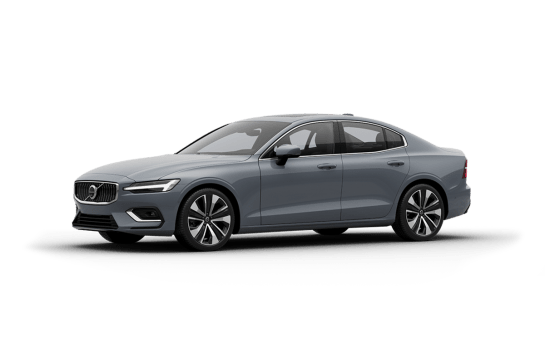Kia Optima VS Audi A3
Kia Optima
Likes
- Very roomy
- Great ownership plan
- Decent price
Dislikes
- Removed some good stuff to lower price
- Not as good looking as pre-facelift model
- A bit basic inside
Audi A3
Likes
- Quality look, quality feel
- Overall balance and driver involvement
- Proves there’s life in sedans and hatches
Dislikes
- Mild-hybrid interesting, but not a game-changer
- Active cruise extra cost in premium version. Should be standard
- Sportback looks don’t flatter the car
Summary
Kia Optima
There are plenty of reasons why you should still consider a mid-sized sedan like the Kia Optima. I’m sure there are… just let me think about this for a sec…
Okay, so this part of the market is dying. A decade ago, sedans like this were really popular, but now there are heaps of alternative options. Yep, people are going for mid-sized SUVs rather than mid-sized sedans like this.
But that doesn’t mean models like the just-updated 2018 Kia Optima are without their reasons for being. I’m just not sure the facelift has made it more appealing to look at…
| Safety rating | |
|---|---|
| Engine Type | 2.4L |
| Fuel Type | Regular Unleaded Petrol |
| Fuel Efficiency | 8.3L/100km |
| Seating | 5 seats |
Audi A3
If it was the original BMW 3-Series that invented the compact luxury car market segment all those years ago, then it’s probably fair to claim it was Audi’s A3 franchise that gave rise to the luxury small-hatch category.
On that basis, any new Audi A3 is news but, in the face of the SUV onslaught (including its own stablemate the Q3) the new small Audi has its work cut out for it.
With this update, there’s refreshed styling, a new interior layout and, for the launch of the new cars, two body styles, a conventionally styled sedan and what Audi calls the Sportback; fundamentally a five-door hatchback but with the German brand’s own flair plastered all over it.
Read more on Audi
- 2022 Audi A3 price and features: Australian pricing of new-gen Mercedes-Benz A-Class and BMW 1 Series rival creeps up
- Audi Q2 to be axed! BMW X2, Mini Countryman SUV rival to be discontinued as Audi heads further upmarket
- Audi Australia draws level with Mercedes-Benz, Lexus, Volvo, Jaguar Land Rover and Genesis with new five-year warranty for A1, A3, A4, A5, A6, A7, A8, Q2, Q3, Q5, Q7, Q8 and e-tron
As well as new connectivity and safety tech, the big news is the availability of a mild-hybrid driveline as well as a second powertrain option with more performance from a more conventional layout.
Interestingly, it’s that (mild) hybrid version of the A3 that represents the entry-level variant of the A3. A sign of the times? Perhaps.
As well as the two powertrains, there are two distinct chassis layouts, starting with a front-drive set-up and extending to the option of Audi’s Quattro all-wheel drive (AWD) system.
| Safety rating | |
|---|---|
| Engine Type | 1.5L turbo |
| Fuel Type | Premium Unleaded Petrol |
| Fuel Efficiency | 4.9L/100km |
| Seating | 5 seats |
Verdict
Kia Optima 7.6/10
If you travel long distances, want a good amount of space and don’t want to pay big bucks for a new car, then yeah, maybe there is a reason sedans like this will hang around for a while longer.
Sure, the appeal of sedans mightn’t be as strong as it once was, but models like the Kia Optima prove they still have a reason to exist.
Is a sedan on your shopping list? Let us know in the comments section below.
Audi A37/10
Producing a car that takes the end result beyond appliance status is no given in a world car-park dominated by SUVs. But Audi has, over the last few decades, shown it is very good at doing just that and the latest incarnation of its A3 stalwart backs that up.
While it might take a bit of mental gymnastics to understand why the base model gets the hybrid driveline, or why the more expensive variant costs more to option with adaptive cruise-control, the fact remains these are driver’s cars from a company that understands that concept.
Yes, the A3 is a relatively expensive way to arrive at a compact hatch or sedan, but if you value the journey as much as the destination, it will all make sense.
While the technical aspects of the 35 TFSI are interesting, the extra power and all-weather grip of the AWD 40 TFSI seem to be worth the additional dollars to us. The A3 has always been a sporty alternative, meaning the sportiest version is the one for us.
CarsGuide attended this event as a guest of the manufacturer, with meals provided.
Design
Kia Optima 7/10
Cosmetic changes for the facelifted 2018 Kia Optima include new headlights and tail-lights with revised LED signatures (but still halogen lamps in the base model), and there are newly sculpted bumpers and new wheel designs across the two-model range.
We had the base model Si, which doesn’t look as good as the GT model, because it has smaller wheels, the sporty body kit and misses out on the LED headlights, but the LED daytime running lights are still present.
The GT has a more aggressive look, and the side skirts, front spoiler and rear diffuser fit it better - there are dual exhausts, but not sporty quad exhaust tips.
In fact, this model is a bit like the old-man version of the Optima. No offence intended to old men, of course. The GT is just heaps sportier, and I reckon it’s considerably more attractive as a result.
Still, the inherent sleek styling of the Optima remains - the chrome highlighting along the window line is a bit too sheeny for me, but the angles and stance of this model are quite gracious. I really dig the fact the top of the windscreen mirrors the ‘Tiger Nose’ grille shape.
I'm no exterior designer, but I liked the existing Optima more - it just looked a bit neater, even though it had a decent amount of bling with its Mercedes-like diamond-pattern grille, as opposed to the cheese grater look seen here.
There’s not quite as much bling inside the cabin of the Si, either, but it is still a well-designed space - just not as special as the premium package offering of the GT (which gets leather trim - not nappa leather, but still a quality cowhide finish, and more). Check out our interior photos to see if you agree - but size and interior dimensions of the Optima are hard to argue against.
Audi A36/10
It’s actually refreshing in 2022 to see a carmaker putting such an effort into something that isn’t an SUV.
That Audi has bothered with two distinct bodies and two equally distinct drivelines is also one for the books, really.
Technically, the mild-hybrid driveline as seen in larger Audis in recent years is probably the highlight of the new A3, and even though it doesn’t compare with a conventional petrol-electric hybrid, it demonstrates Audi’s attention to detail.
The same goes for the digital instruments which allows the driver to tailor the information displayed at any given time. Need a city map more than you need a tachometer at a particular point in you journey? That’s where this technology comes into its own.
Practicality
Kia Optima 8/10
I really like the way Kia designs its cabins. Sure, there’s a lot of black in here, but there’s also a lot of thought put into the usability of the space.
The high-mounted 7.0-inch infotainment and multimedia touch screen in the Si is simple to use, and for 2018 the Optima range gets Apple CarPlay and Android Auto - you couldn’t get that in the Optima up to this point.
Also included are a reversing camera, USB input, Bluetooth phone and audio streaming and six speakers. The Si model misses out on sat nav - you’ll have to use the maps app on your phone. No DVD player either.
Storage is well thought out in here, with big bottle holders in the doors, a good sized pair of cup holders up front, and a nice little storage bin for your phone, wallet, keys and so on.
There’s a driver info screen with a digital speedo, and even on this base model you get a dual-zone climate control air conditioner. The updated Optima gets a new steering wheel, too.
Now, what about the back seat?
It may be considered a ‘mid-sized’ sedan, but there’s limo-like space. With the driver’s seat in my position (I’m about six feet tall) there was still heaps of rear legroom in the rear seat, with ample knee room, good foot room and decent shoulder space, too - three of me could slot across the back bench comfortably, which means kids will fit easily, too. There are three top-tether points and two ISOFIX points as well.
Kids and adults alike will be happy with the rear air vents back here, and there’s a flip down armrest with cupholders, too. Again, big bottle holders appear in the doors, and there are map pockets in the back seats.
What about boot space? With so many people choosing SUVs over sedans because they’re theoretically more practical, the Optima offers good food for thought - it has enough luggage capacity for a bunch of suitcases (510 litres VDA in size) and there’s a full-size alloy spare under the boot floor. If you need more, you could always invest in a roof rack setup?
Audi A36/10
Although it’s a compact car externally, clever packaging means there’s ample space inside. Even a tall-ish rear-seat passenger can sit behind a tall-ish driver, and the sculpted rear seat-backs help make that possible.
The only complaint would be that the dark headlining material makes the interior a bit of a cave at times.
Paying more for the 40 TFSI gets you extra cargo nets on the front seat backrests and luggage area, 12-volt sockets in the rear seat and boot. Both versions get floor mats and a centre arm-rest front and rear.
The rear seat in either is split 40/20/40 for a range of possibilities, with the Sportback offering 325 litres (VDA) for the Sportback quattro models, and 380L (VDA) for the 2WD models and its boot capacity is increased to 1145L (VDA) with the rear seat folded flat. The luggage space in the sedan is 390L (VDA) for the quattro AWD version, and a more capacious 425L (VDA) for the FWD model.
Price and features
Kia Optima 7/10
Kia dropped prices for this updated and facelifted model range - and not by a small amount, either. So, what's the price? How much does it cost?
The Si model is the entry-grade of two models, and it comes in at the bottom of the price list at $33,290 plus on-road costs (rrp) - an $1100 drop over the previous version. The Si, then, is a value-focused sedan that you might consider if you’ve looked at a Toyota Camry Ascent, Hyundai Sonata Active, Mazda6 Sport or Subaru Liberty 2.5i.
The standard equipment list is pretty good - although there have been some deletions, because the price is down $1100. The rather good HID headlamps with washers have been dumped in favour of halogen projector lights (yeah, not even xenons), and the satellite navigation system (GPS) is gone.
But now the 7.0-inch media screen is capable of doing the Apple CarPlay iPhone connectivity and Android Auto phone mirroring thing, and that’ll serve most people’s purposes pretty well, but there is no digital DAB radio, and no CD player for the sound system. Other standard kit includes a digital driver info display with digital speedo, dual-zone climate control, cloth seat trim, auto-dimming rear-view mirror, a reversing camera, front and rear parking sensors, auto headlights and rain sensing wipers, and 17-inch alloy wheels (with a full-size spare).
New equipment for the Si includes driver-fatigue monitoring and an active lane-keeping assistance system (in place of the old lane-departure-warning buzzer).
If you want all the fruit you really need to fork out the extra cash for the GT, which lists at $43,290 plus on-roads (vs $33,290 for the Si). That is getting perilously close to Kia Stinger territory… but let's not get too far ahead of ourselves - this isn't a model comparison!
You get a fair bit more for your dough, but even the GT has seen a few deletions to help justify its $1200 price drop compared to the pre-facelift model, such as the front passenger seat being manually operated (previously electric), the cooling/ventilation of the front seats has been deleted, and the panoramic sunroof of the previous model is gone, too. And while it rides on 18-inch rims with a new design, the tyre-pressure-monitoring system has been removed.
It uses a new 8.0-inch media screen with extended smartphone connectivity and in-built sat nav (with 10 years of maps included and SUNA live traffic updates), and it also gains redesigned LED headlights but they lose the smart auto high-beam assistance of the old model. The tech doesn't go as far as to include Homelink garage door opening here in Australia, either.
Other standard kit in the GT includes leather seats, electric driver’s seat adjustment with memory settings, smart key (keyless entry) and push button start, a sports body kit, a harman/kardon audio system with 10 speakers and a subwoofer, wireless phone charging (Qi) but no Wi-Fi hotspot, rear sunshades (but no tinted windows), different interior trim finishes, a heated steering wheel, and a colour driver-information screen.
The GT also gets the new lane assist system and driver-fatigue monitor, and the entire safety approach has been improved across the range. See the safety section below for more detail.
There is no launch edition, nor is there a sports edition, but there is a decent array of colours (or colors, depending on where you're reading this) available - black, white, blue, red, grey and silver can be chosen, but not brown, purple or gold... if you wanted those.
Accessories available across both trim levels include tailored floor mats, a dash mat and weathershields, among other items.
Audi A37/10
These are not bargain basement cars, and with a kick-off price of $46,900 for the A3 35 TFSI Sportback (the hatch version) and $49,400 for the sedan in the same specification, that much is obvious.
The fact is, both the new A3 variants represent a fair mark-up on the previous model. But if you look at the post-Covid car market in a macro sense, you can see the same trend across a lot of brands and a lot of previously entry-level models.
Ante up to the 40 TFSI, and the news is no different with an asking price of $53,500 (Sportback) and $56,000 (sedan).
If the price sounds steep on a per-kilo basis, you need to remember this is an Audi we’re talking about and that price premium is part and parcel of a prestige badge. Don’t like it? Go and buy a VW Golf. That’d be Audi’s advice, anyway.
To justify that viewpoint, the A3 is loaded with some impressive standard kit. The 35 TFSI starts things off with Audi’s vaunted 'Virtual Cockpit', wireless phone charging, voice recognition, Apple CarPlay and Android Auto, remote central locking, paddle shifters, park-assist, sat-nav, a 10.1-inch touchscreen, LED headlights, a multi-function steering wheel, automatic lights and wipers, digital radio, cruise-control and dual-zone climate control.
The 40 TFSI adds a range of aluminium trim pieces and garnishes, Audi’s 'Drive Select' system which allows the driver to choose the characteristic of the dampers, steering response, exhaust sound, throttle response and transmission shift points.
The 40 TFSI also adds sportier front seats, a rear spoiler, body kit, extra courtesy lights around the car and details such as a 12-volt socket in the luggage area.
Options on the base model include a 'Comfort Pack' consisting of adaptive cruise-control, electric front seats, heated front seats, auto dimming headlights, heated and folding mirrors, four-way electric lumbar control and 'Adaptive Drive Assist', including 'Emergency Assist.'
That will set you back $2600, while the 40 TFSI can be enhanced with Audi’s 'Premium Package' which adds those same items as well as aluminium-look trim pieces, a better sound system, head-up instrument display and a memory function for the driver’s seat. That adds $4500 to either the 40 TFSI Sportback or sedan.
Under the bonnet
Kia Optima 7/10
The Si model is powered by a 2.4-litre four-cylinder petrol engine, which has seen no changes to its specifications for this mid-life update.
Engine specs remain at 138kW of power at 6000rpm, while torque is rated at 241Nm at 4000rpm. It makes use of a six-speed automatic transmission only - there’s no manual transmission here, but you do get paddle shifters - and it's front wheel drive (the Optima isn't available with AWD, or as a 4x4, or in rear wheel drive - the latter is left to its bigger brother, the Stinger).
The GT gets a zestier drivetrain with more horsepower - it has a 2.0-litre turbo four-cylinder engine with 180kW/350Nm, which is much more desirable, but also louder than the Si’s 2.4. It also has a six-speed auto transmission, and is FWD. If you're into ratings and statistics, that 2.0-litre with a turbocharger is one of the perkier offerings for its engine size in the class.
There is no hybrid model available, despite a plug in hybrid petrol version (allowing you to run in EV mode) being sold in European markets. No diesel here, either, while other markets get a 1.7-litre turbo diesel. No LPG model here, or anywhere else, for that matter.
Towing capacity for Optima models is 750kg unbraked and 1700kg braked for the 2.4-litre, and 700kg/1400kg for the 2.0-litre turbo. Tow bar down-weight is capped at 80kg.
If you're concerned about engine problems, suspension problems, clutch and transmission issues, be sure to check out our Kia Optima problems page.
Audi A37/10
While both versions of the A3 use a seven-speed dual-clutch transmission (no manual gearbox will be offered) there’s not a lot of commonality beyond that.
So let’s start with the 35 TFSI’s mild-hybrid running gear. To begin with, mild-hybrid in this sense refers to a starter motor/alternator unit that is linked to a 48-volt battery (the car also has a conventional 12-volt electrical system).
When coasting, the engine can shut off and the starter switches to alternator mode and harvests the otherwise lost energy to charge the 48-volt battery. This 48-volt system also powers the car’s functions when the engine is switched off.
When the car needs to restart (when the traffic-light goes green) the starter kicks in, using that harvested voltage. There’s also a regenerative braking function, saving the car’s actual brakes for more severe stops.
Unlike a 'normal' hybrid system, there’s no electric motor to help drive the car, but Audi claims a potential fuel saving of 0.4 litres per 100km from the set-up. Any benefit will be most noticeable in urban running where the car is speeding up and slowing down regularly.
The rest of the 35 TFSI is technically interesting, too, with the 1.5-litre four-cylinder turbocharged engine featuring cylinder-on-demand where it can shut down individual cylinders during cruise conditions to save fuel.
When firing on all four, however, the engine is good for 110kW of power and 250Nm of torque, figures which have become almost an industry standard in this sized vehicle.
The 40 TFSI, meanwhile, ditches the hybrid gear for a conventional 2.0-litre powerplant with a turbocharger and 140kW of power. Torque is a handy 320Nm and is developed over a wide range of engine speeds (anywhere from 1500 to 4100rpm).
The other big difference is in the driveline. The 35 TFSI is a front-wheel drive platform while the 40 TFSI uses Audi’s Quattro AWD as it applies to Audis with an east-west engine layout.
That means the car behaves as a front-drive vehicle until the electronics decides more power should be sent to the rear wheels. At that point, anything up to 99 per cent of the available torque can be transferred rearwards via an electronically-controlled multi-plate clutch housed at the rear of the car, just in front of the rear axle.
Efficiency
Kia Optima 8/10
Kia claims a very realistic fuel economy rating of 8.3 litres per 100 kilometres for the Si model, and we saw damn close to that consumption during our week of testing. On the highway it will sit at around 6.5L/100km, ensuring good mileage, while city driving will push usage above 12.0L/100km. Our overall average was 8.5L/100km, which is good. Use the eco mode, and you'll get a little better use.
The turbocharged GT model uses a little more, according to Kia’s 8.5L/100km combined average claim, but we guarantee you’ll actually use more than that because it’s more eager to please.
Fuel tank capacity is 70 litres - plenty of size for long distance drives.
Audi A37/10
With all its cylinder shut-off, hybrid tricks and small capacity, the 1.5-litre engine boasts a 5.0 litres per 100km combined cycle fuel economy figure.
Combined with its 50-litre tank, that’s a potential for 1000km between service-station visits. It’s also commendably close to the numbers you’d expect from a similarly sized vehicle with a turbo-diesel engine.
The more conventional 2.0-litre A3 variant, meanwhile, boasts a still-credible 6.7 litres per 100km for the same test. To counter its greater thirst, Audi has fitted a slightly bigger, 55-litre fuel tank.
The headline act, of course, is the base-model’s highway figure which, thanks to the small capacity engine and its reduced pumping losses at small throttle-openings, can get right down into the low-fives (5.0 litres per 100km) in the real world at real highway speeds.
With a tail-wind, you might even see a number starting with four. This is why you don’t need a diesel engine any longer.
Expect the 40 TFSI to use roughly a litre more across every 100km travelled. And in either case, you are stuck with paying for 95-RON premium unleaded.
Driving
Kia Optima 7/10
The Optima has some really good elements to the way it drives, but sadly some less impressive bits as well.
Let’s start with the not-so-great stuff - the 2.4-litre engine in this Si model just isn’t as enjoyable as the turbo unit, and the fact that Kia still doesn’t offer a hybrid version here, despite doing so elsewhere, is a bit of a downer.
The drivetrain isn’t terrible - the six-speed auto is smart enough, and there’s usable power if you boot it. The two more sedate drive modes, 'Eco' and 'Comfort', mean the transmission will aim to save fuel and limit throttle response, with a bit more of a lazy feel to the drive experience. But in 'Sport' mode it is definitely more rewarding in terms of acceleration and performance, offering a bit more pep and urgency (we didn't do a 0-100 km/h speed test, but take our word for it); it undoubtedly at the cost of fuel consumption.
It’s just a bit of a shame Kia doesn’t offer the turbo in this spec, too. Fuel use for the Si model is better than the turbo, however, so it could be ideal for buyers who are more worried about the bottom line than design and a sportier drive.
The thing I like most about the Optima is its road manners - the steering and suspension have been tuned for local conditions, just like all Kia products, and it shows.
The electric power steering is really well sorted, making for easy parking moves and good assuredness at higher speeds. And the turning circle is decent, too - 10.9m (so, the turning radius is 5.45m).
Plus the ride comfort is really good. On the highway it coasts along with very little fuss, and around town it deals with lumps and bumps impressively. Sharp edges can upset things a tad, and mid-corner bumps can make it jitterbug a little bit, but not to a degree that would rule it out of contention if you want a mid-sized sedan.
It’s pretty quiet on the open road, too, and the adaptive cruise control makes long-distance driving a simple task. The GT does suffer a little bit more road noise, though.
Audi A38/10
Let’s start with the less powerful 35 TFSI, if only because - even though we know better in 2022 - there’s a temptation to think a 1.5-litre engine will be underdone. The reality, however, is that you’re not going to drive this car and judge it as anything other than very resolved.
While it’s true the peak power of 110kW isn’t startling, it’s the way it’s delivered (along with the 250Nm of torque) that sets the mood here.
Like many late-model Audis, this one has an engine with a fizzy, zingy feel that makes you want to rev it just to hear and feel it. And when you do, it pays off with plenty of flexibility and a sophisticated, refined feel.
Whether the mild hybrid driveline is adding anything to the formula is debatable, because the technology is so seamless you won’t pick what it’s doing other than the engine stop-start function, which is one of the better ones we’ve sampled.
Move from the 35 into the 40 TFSI and you immediately notice the extra power and torque on tap. And although it’s still not a hot-hatch by modern standards, there’s always enough urge to make the 40 TFSI a convincing driver’s car.
Again, the power delivery is the key to it all, making more of what the engine has to offer by actively encouraging you to use it. The seven-speed dual-clutch transmission is your friend here.
The extra driveline functionality of the 40 (namely the AWD system) actually means less than you might imagine in day-to-day life. We didn’t get to drive the car in the wet, but it’s fair to say that those conditions (or a loose, gravel road) are really the only ones likely to make a difference to the way the basic platform feels.
That’s for two reasons; the first being the all-wheel-drive is fundamentally on demand anyway and, secondly, the basic platform is so composed and balanced in the first place, that the Quattro system will spend a lot of its time hiding in the background.
The 40 TFSI also get the selectable drive modes which break with tradition by actually making a difference to the way the car feels.
But the reality is that if you took the best bits of every other setting (Comfort, Dynamic and Efficiency) and loaded them into the Individual button, you’d probably wind up with something very close to what the non-adjustable 35 TFSI offers in the first place.
You have to admire the way Audi has made a front-drive car in the A3 steer, handle and talk to the driver in such a clear, precise way.
Yes, the 40’s selectable modes add another layer to that, but only if you can be bothered. Even more than that, the A3 in either form feels like its ultra-stable and safe, while the levels of feel and feedback give the impression they were decided upon by people who enjoy driving.
Safety
Kia Optima 8/10
The safety rating of the Optima remains at five stars, as it was when the car was tested in this generation in 2015.
The updated Optima carries over the safety features of the previous model including autonomous emergency braking and adaptive cruise control, while the lane-departure warning system is now supplemented with lane-keeping assistance, and there’s driver-fatigue monitoring added, too. There is no park assist / self parking system.
That’s in addition to a reverse camera, front and rear parking sensors, and all the systems you’d expect, like stability control, anti-lock brakes, hill-start assist and seatbelt reminders.
Airbag coverage for Optima models is six: dual front, front side and full-length curtain. And parents will be happy to learn there are three top-tether attachment points, and two ISOFIX anchors, too.
If you've been wondering to yourself, "where is the Kia Optima built?"The answer is South Korea.
Audi A38/10
Possibly the headline (no pun intended) act here is the inclusion of a centre-front airbag. This is something we’ll be seeing a lot more of in the future, particularly in compact cars, where the proximity of the front-seat passengers can lead to head clashes in a side-impact crash.
Beyond that, the Audi has six airbags including side-curtain airbags.
In terms of driver aids, the A3 sets a high bar for its competitors, and with autonomous emergency braking including pedestrian and cyclist recognition, rear-cross-traffic alert, lane-departure assist and a rear-view camera, most bases are covered.
The major omissions are adaptive cruise-control, but that’s available in the 35 TFSI as part of the $2600 Comfort Package, and in the 40 TFSI as part of the $4500 Premium Package.
Yes, the Premium Package also includes heated, memory front seats, a head-up display, improved stereo and the multi-coloured ambient interior lighting (and more) but it does seem strange that it costs more to option up to adaptive cruise in the 40 TFSI than in the base-model.
The A3 scored the full five stars in ANCAP crash testing in 2020.
Ownership
Kia Optima 9/10
Kia remains a shining light in terms of its new-car-ownership promise, with a very strong seven-year/unlimited kilometre warranty. It makes a lot of sense if you plan to hang onto the car for a while. There's no extended warranty available, which is understandable.
That plan also includes a roadside-assist plan for the same seven-year period, provided you maintain your car with Kia Australia. So, given you get one year to start with, then you get an extra year of cover every time you go back to Kia to get your car serviced, you could end up with eight years of coverage. Nice!
Servicing is due every 12 months or 15,000km, with the first seven years covered by a capped-price-service cost / maintenance cost plan. The costs are: service one - $289; two - $466; three - $360; four - $559; five - $325; six - $599; seven - $345. That makes a total cost of $2943, which is competitive for its class. Keep your owners manual or logbook up to date, and your resale value should hold up better.
If you have concerns about common problems, issues, reliability ratings and durability, you should check out our Kia Optima problems page.
Audi A37/10
Audi recently improved its factory warranty from three years to five years and unlimited kilometres. Any new Audi (including this one) sold after January 1 this year is the beneficiary of that change.
Audi specifies service intervals of 15,000km or 13 months.
There’s also the option of a fixed-price servicing program for the first five years of A3 ownership, and that will cost you $2250, for an annual average of $450.






